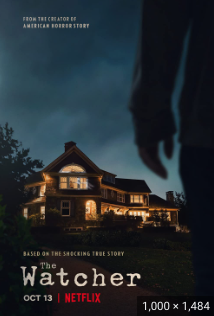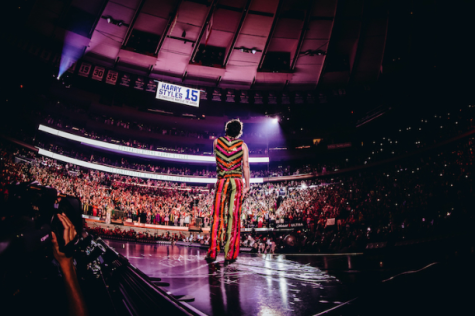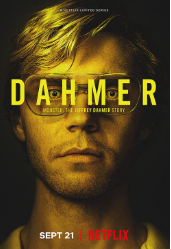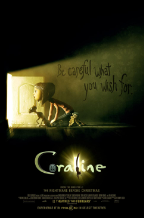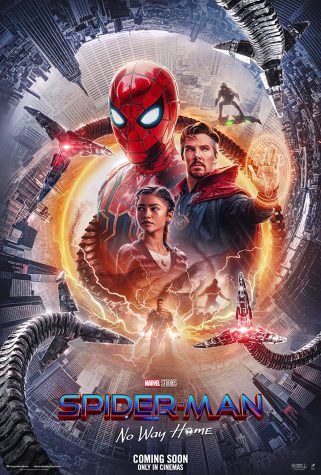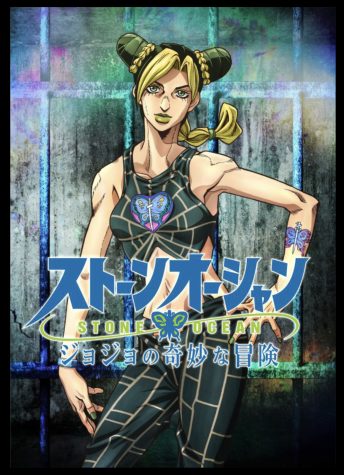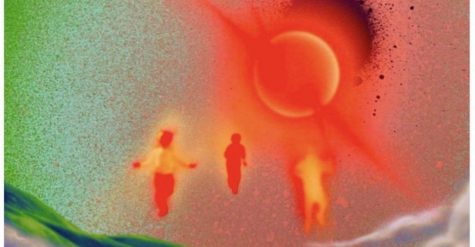The Marvels of Westview: WandaVision Review
WandaVision took the world by storm during its weekly releases, and rightfully so. A limited series by Marvel, presented on Disney Plus, gained popularity with its release of new episodes every Friday that kept people hooked. The series centered around Wanda Maximoff, also known as the Scarlet Witch, and her husband, Vision, as they take on many adventures that eventually lead to showing that not everything is what it seems in the perfect world of Westview.
The lore of the story and how it fits into the journeys of Wanda and Vision should primarily be explored. Whether it be through slight hints at comic book references, or abnormal commercials breaking the sequence of the episodes to reveal movie connections, or just new elements of the story, the way the show went about digging up the past of Vision, and especially Wanda, was so unique and immersive. The reason why this is so important is that in Westview, every person that inhabits the town is not entirely normal, and having these subtle hints in each episode helps fans, aware of prior Marvel lore or not, to uncover the secrets of Wanda’s reality. The most notable exposition that the show includes is, of course, Wanda’s backstory, as it connects all of the disturbing details of Westview into one and makes sense of the confusion in the show.
Another innovative part of the series was the continuous jump through decades, from the 50s to the present. This may not seem like that big of a deal for shows, but when this time jump is revealed through its importance in Wanda’s childhood, it changes everything about the show. This is one of the main reasons why Marvel fans were so pleased with the show; this new format changes how the Marvel universe is viewed, especially in Wanda’s eyes. The slow burn essence of the series is so crucial to the decade changes, and the way the environment stays true to each decade hooks the viewers in on what the next decade/episode will reveal. By incorporating television tropes from each specific decade, they are deployed to thicken the plot through each 30 to 40–minute long episode.
The series was also full of suspenseful moments. Similar to the movies in the MCU, WandaVision made sure to keep the viewers on the edge of their seats. Whether it was buildup to an important plot point or small hints and details peppered throughout the episodes, many elements kept viewers engaged. Each episode also ended on a cliffhanger, which was another tactic that ensured that the audience would be back for more. The show was also full of plot twists which kept viewers guessing, and they built up excitement and anticipation for the next unexpected moment.
While the slow pace in the beginning of the series in many people’s opinions is what makes the show that much more interesting when things fall apart in Wanda’s reality, many argue that it is also the show’s downfall. However, it is just as much of a strength as it is a weakness for the show. The slow pace is harder to sit through at the start since it is still a time in the series where the audience is uncertain of what is going on. Yet, in a sense, this is also a crucial element of the show because the preparation for all of the action is very necessary to understand the character development of each person involved. So, the only downside of the series is its slow paced timing, as it does feel dragged out at times, but the episodes that incorporate less activity are pivotal to the actual storyline.
The grim undertones of the series compared to the more pleasant moments give the show heft and texture that has never been seen before in the Marvel Cinematic Universe, inviting the audience further and further through each riveting episode. The elements of both light and dark are woven together seamlessly, and it makes both the parodic elements of the show and the more intense occurrences that much more effective to the viewers leaving them with a raw experience. Even though there are plenty of funny moments in the show, the relevance that each holds depicts that these moments are always more than just a gimmick.
WandaVision is essentially an emotional rollercoaster, and even if the viewer is not at all aware of the heroes and their stories, it does a wonderful job at creating an emotional connection between the characters and the audience. For a show catering around heroes, villains, and everything in between, it brilliantly displays the grief and trauma that can be caused by the pressures and losses of the Marvel universe. Determining the true protagonist and antagonist gets increasingly more difficult, and the series uncovers new storylines for the Marvel universe that have never been talked about beforehand. Of course, it does this in the most eccentric, and even heartbreaking ways.
Overall, the risks the show took as a whole are something that deserves lots of respect. The relevance of regular Marvel lore combined with the show’s own spin on the emotional journey of each character, especially Vision and Wanda, is extremely impactful to the audience. The hints that it alludes to as well to other entities in the Marvel universe are always fun for fans to crack open, and the series was just as immersive as a theory experience as it was a MCU creation. With that being said, the creativity and evolution that WandaVision offers makes it more than worthy of a 9/10 rating, for its nearly perfect encapsulation of a powerful female Avenger and the beauty of displaying her own raw internal and external struggles.

